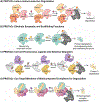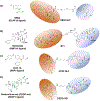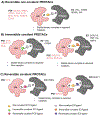PROTACs: An Emerging Therapeutic Modality in Precision Medicine
- PMID: 32795419
- PMCID: PMC9424844
- DOI: 10.1016/j.chembiol.2020.07.020
PROTACs: An Emerging Therapeutic Modality in Precision Medicine
Abstract
Targeted protein degradation (TPD) has emerged as an exciting new era in chemical biology and drug discovery. PROteolysis TArgeting Chimera (PROTAC) technology targets cellular proteins for degradation by co-opting the ubiquitin-proteasome system. Over the last 5 years, numerous studies have expanded our understanding of the unique mode of action and advantages of PROTACs, which has in turn spurred interest in both academia and industry to explore PROTACs as a novel therapeutic strategy. In this review, we first highlight the key advantages of PROTACs and then discuss the spatiotemporal regulation of protein degradation. Next, we explore current chemically tractable E3 ligases focusing on expanding the existing repertoire with novel E3 ligases to uncover the full potential of TPD. Collectively, these studies are guiding the development of the PROTAC technology as it emerges as a new modality in precision medicine.
Keywords: E3 ligase; PROTACs; PhotoPROTACs; covalent ligands; proteasome; targeted protein degradation.
Copyright © 2020 Elsevier Ltd. All rights reserved.
Conflict of interest statement
Declaration of Interests C.M.C. is founder, shareholder, and consultant to Arvinas, Inc. and Halda, LLC, which support research in his laboratory.
Figures







References
-
- Albert L, and Vázquez O.(2019). Photoswitchable peptides for spatiotemporal control of biological functions. Chemical Communications 55, 10192–10213. - PubMed
-
- Asatsuma-Okumura T, Ando H, De Simone M, Yamamoto J, Sato T, Shimizu N, Asakawa K, Yamaguchi Y, Ito T, Guerrini L, et al. (2019). p63 is a cereblon substrate involved in thalidomide teratogenicity. Nature Chemical Biology 15, 1077–1084. - PubMed
Publication types
MeSH terms
Substances
Grants and funding
LinkOut - more resources
Full Text Sources
Other Literature Sources

